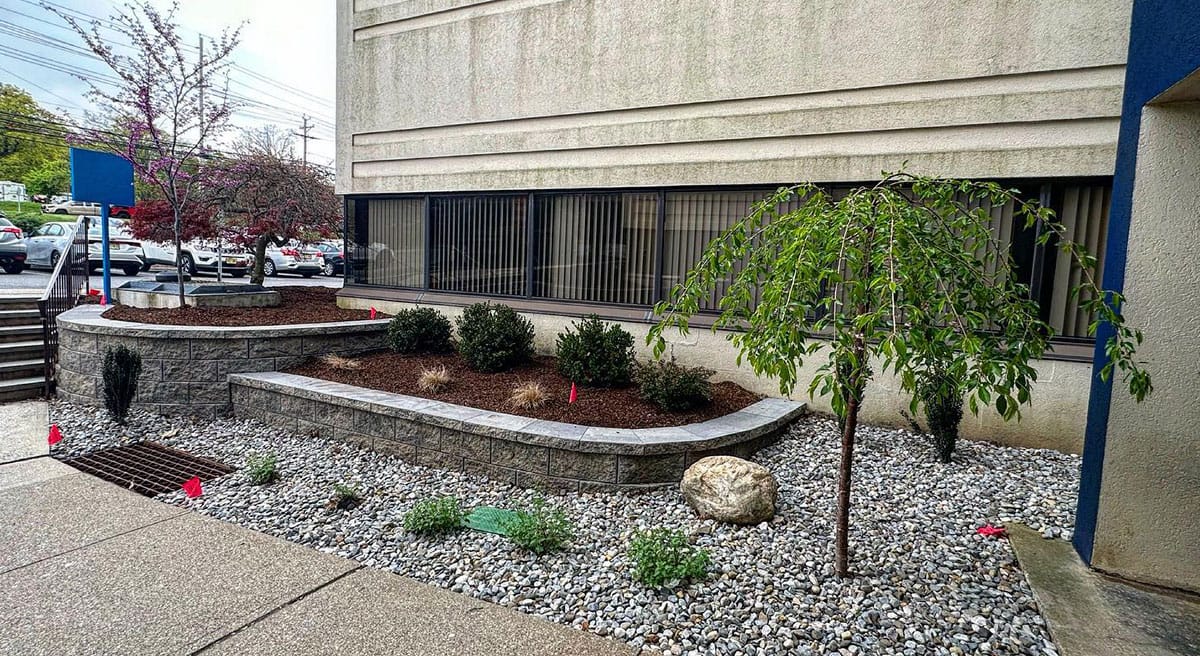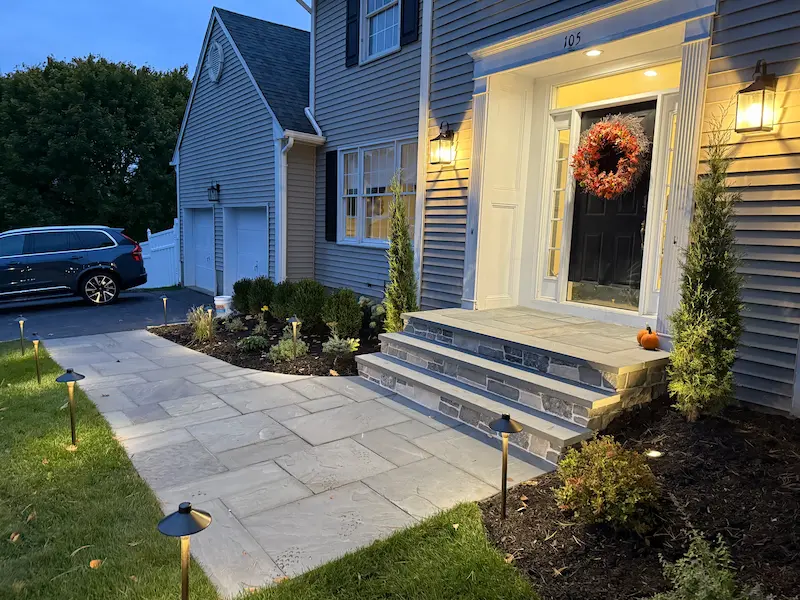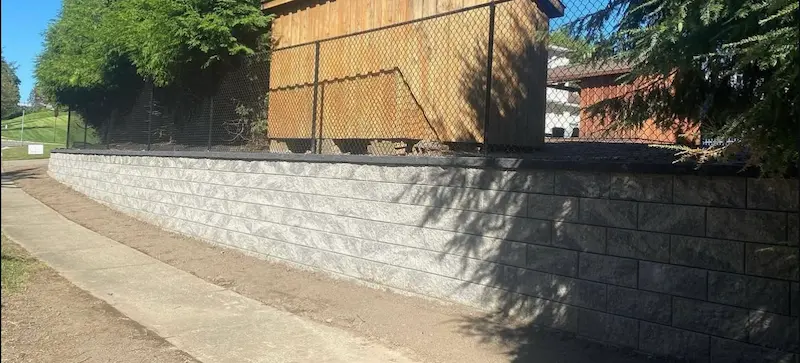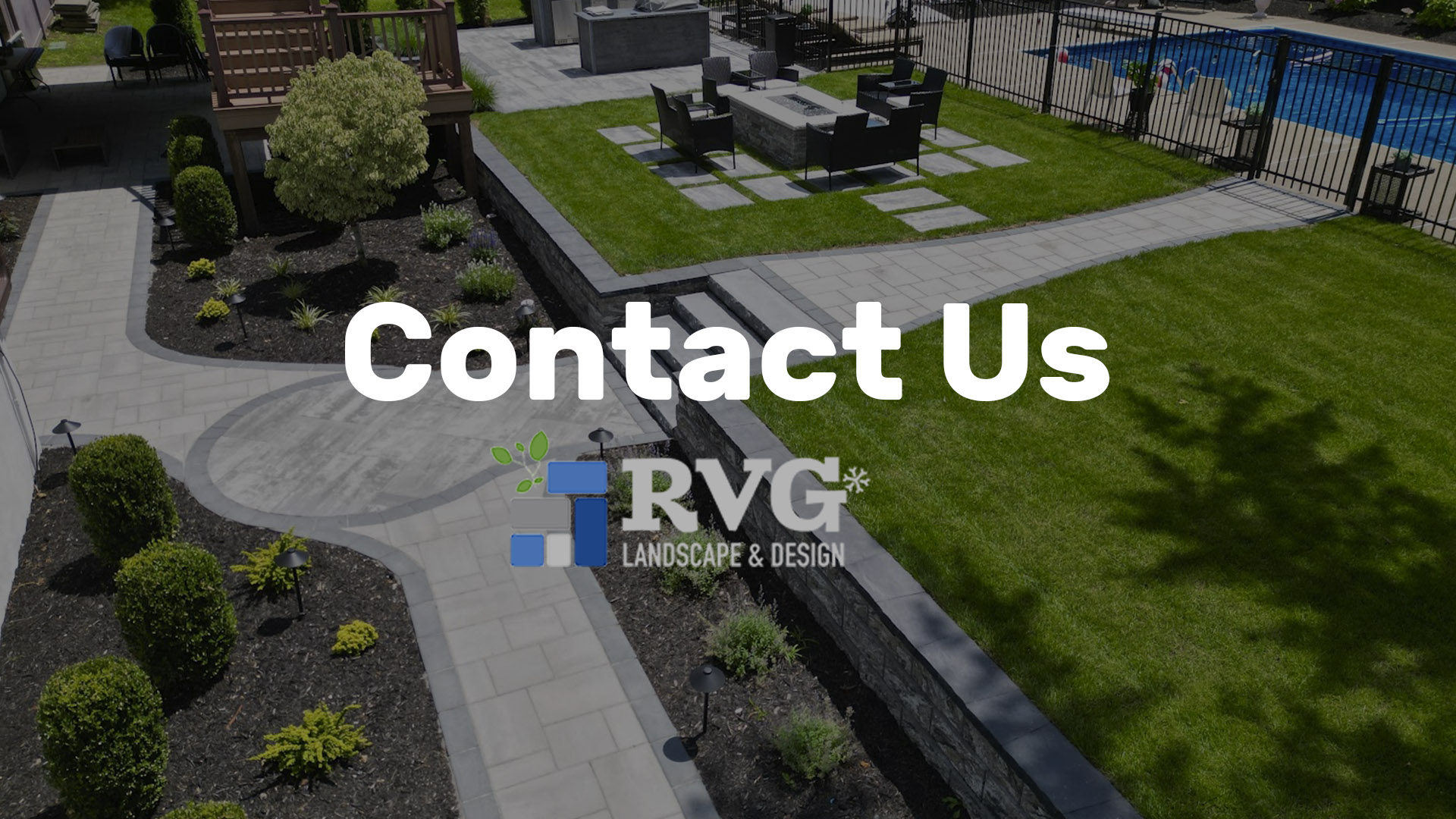More Than a Wall
Picture a yard that flows naturally, even on a slope. Or a commercial space with clean, defined lines and no standing water after a storm. That’s the power of integrating walls into your landscape, they bring order, beauty, and a sense of purpose.
When most people hear “wall,” they think of something rigid, static, plain, maybe even a little boring. But wall landscaping flips that idea on its head. It’s not just about building a barrier. It’s about shaping space, solving problems, and bringing character to outdoor areas that might otherwise go unnoticed.
Why Use Walls in Landscaping?
Landscaped walls do a lot more than hold back soil. Sure, that’s part of it. But they also shape how you move through a space, how water drains, how light hits different areas, and how a yard or courtyard feels overall. They can divide, support, frame, or elevate (sometimes all at once).
Walls can turn steep, useless terrain into level patios or tiered gardens. Moreover, they can lead the eye to a centred structure like a fountain or sculpture. And in commercial spaces, they create polished, low-maintenance zones that add curb appeal and increase usability.
You’re not stuck with a single material or look, either. Materials like natural stone, decorative masonry blocks, modern concrete, and even living green walls are all viable options, each offering a distinct visual appeal and functional advantage.
Advantages:
There are plenty of reasons to integrate wall landscaping into your property. Some are functional, some aesthetic, and most fall somewhere in between:
- Prevent erosion: Retaining walls help stabilize sloped areas, especially after rain.
- Create levels: Walls allow you to terrace a yard or break up large spaces into more usable zones.
- Add privacy: Freestanding walls or raised beds can block views and create more intimate outdoor areas.
- Highlight design features: Use walls to frame gardens, anchor patios, or support seating areas.
- Increase property value: Well-constructed walls improve curb appeal and can boost resale potential.
- Optimize flow: Walls guide foot traffic and define areas like dining spots, walkways, and play zones.
When Style Meets Strategy
A well-placed wall can completely reshape how a space feels. For instance, you might use a short retaining wall to break up a large, flat lawn and give it some dimension. Or a set of tiered planter walls might turn a slope into a blooming garden that looks good from every angle. For commercial properties, walls can also create walkways that naturally guide foot traffic, highlight signage, or make entrances more welcoming. They’re not just useful, they make your landscape feel thought-out. And materials matter here. Stone blends with natural surroundings. Concrete blocks offer a clean, modern look. Brick brings warmth and a timeless feel. The right choice depends on the function and the vibe you want your space to give off.
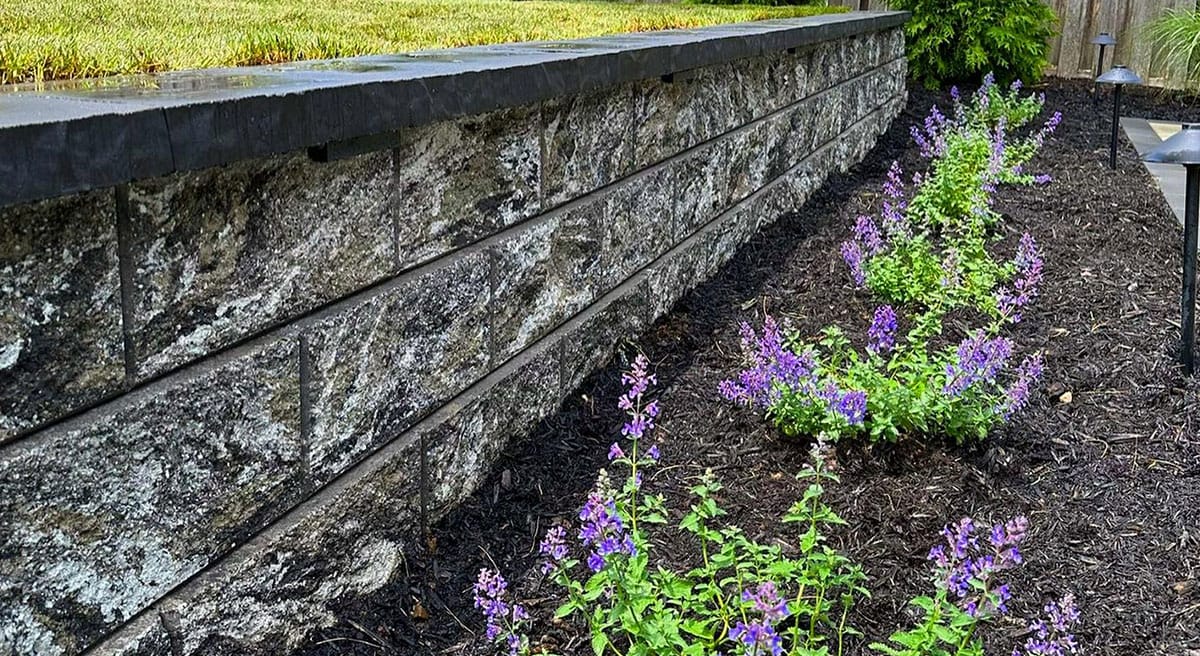
Wall Landscaping in Real Life
Let’s take a small business property that sits on a slope. Without a retaining wall, runoff during heavy rains erodes the soil, clogs drains, and creates muddy, unsafe walkways. What happens after adding a well-placed wall? You’ve not only solved the drainage issue but also opened up space for planting, or a seating area for guests and clients.
Or think about a backyard with a sharp hill. Instead of avoiding that space, you can cut into it and add a retaining wall to develop a flat surface for a fire pit, a vegetable garden, or just an open lawn where the kids can run safely.
Wall landscaping isn’t only for fancy estates or HGTV features. You’ll see it everywhere when you know what to look for:
- In neighborhoods, retaining walls turn sloped driveways into smooth entries.
- At schools and office parks, raised beds with seating walls double as green space and places to gather.
- Along walkways and trails, low stone walls act as natural borders and quiet design statements.
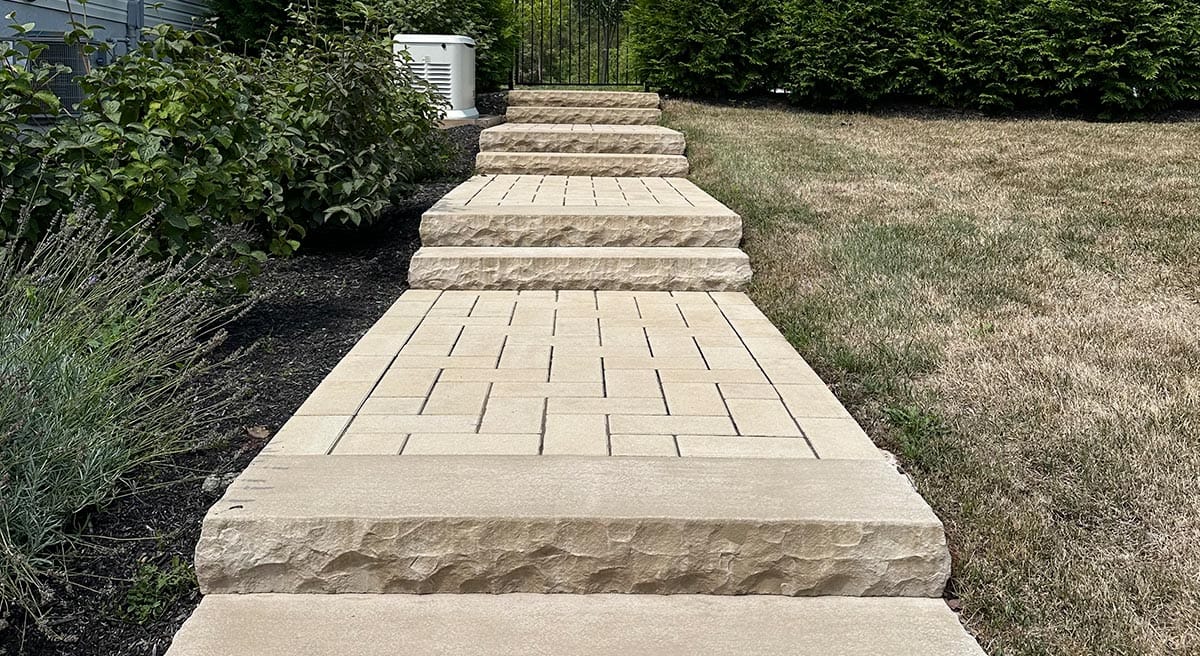
Take a closer look at how walls, terraces, and smart outdoor design can shape the space around you—naturally, purposefully, and with lasting impact.
FAQ section
Do I need a retaining wall or just a decorative one?
It depends on your property’s terrain. If you have a slope or drainage issues, a retaining wall may be necessary to hold soil in place. If your ground is mostly level, a decorative fence can be used only for design or to create seating, garden borders, or visual interest.
What should I look for in a patio design company?
Look for experience, a solid portfolio, clear communication, and a company that offers both design and build services, like RVG Landscaping. That way, you’re working with one team from start to finish, ensuring a smoother process and consistent results.
How long does it take to install a landscaping wall?
Every project differs based on size, design complexity, and site conditions. Smaller decorative walls may take a few days, while more complex retaining wall systems can take a week or more. During your consultation, RVG Landscaping provides a clear timeline specific to your project.
What’s the maintenance like on landscaping walls?
Low-maintenance materials and proper installation mean your wall won’t need much upkeep. Most walls just need occasional cleaning and checks for settling or wear over time—something our team can also help you with if needed.
Is professional installation really necessary?
For walls that need to support weight or manage water and soil pressure, professional installation is essential. DIY walls can shift, lean, or fail entirely if not properly engineered. Our team ensures every wall is built with the right foundation, drainage, and long-term durability in mind.

